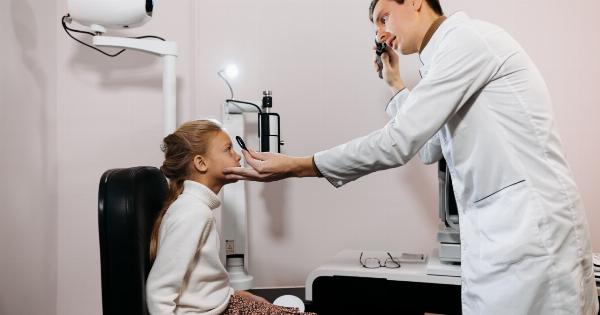When it comes to healthcare, there are various professionals who play a crucial role in ensuring the well-being of individuals, especially children. Two such professionals are pediatrician-developers and therapists.
While both aim to provide care and support to their patients, there are distinct differences between the roles they play, their qualifications, and their approaches to patient care. In this article, we will explore these differences, highlighting the unique skills and expertise that each brings to the healthcare field.
Pediatrician-Developer: Medical Expertise Combined with Technological Innovation
A pediatrician-developer is a unique hybrid professional who possesses both medical expertise and advanced skills in software development and technology. These individuals have completed medical school and residency training, specializing in pediatrics.
In addition to their medical qualifications, they have also acquired significant knowledge and proficiency in computer programming, software development, and innovative technologies.
One of the key advantages of having a pediatrician-developer in the healthcare setting is their ability to harness technology to improve patient care.
They can develop software applications, digital tools, and platforms that can streamline administrative processes, enhance communication between healthcare providers, and improve the overall efficiency of healthcare systems. Their innovation and technical skills enable them to create solutions tailored specifically to the needs of pediatric patients, ensuring they receive high-quality care in a digitally connected world.
Furthermore, pediatrician-developers are at the forefront of utilizing digital health records, telemedicine, and remote monitoring systems, allowing them to provide comprehensive and efficient healthcare services.
These technologies not only facilitate better communication between healthcare providers and patients but also improve accessibility to care, particularly for families residing in remote areas.
Therapists: Masters of Mental and Emotional Well-being
On the other hand, therapists, who can specialize in various areas such as psychology, psychiatry, counseling, or occupational therapy, focus on the mental and emotional well-being of their patients.
They play a crucial role in diagnosing, treating, and supporting individuals who are experiencing psychological or emotional difficulties.
Therapists employ various therapeutic techniques and approaches, such as talk therapy, cognitive-behavioral therapy (CBT), play therapy, or art therapy, depending on the needs of their patients.
They aim to help individuals understand and overcome their challenges, develop healthy coping mechanisms, and improve their overall quality of life.
A therapist works closely with their patients to create a safe and supportive environment, where individuals can freely express their thoughts and feelings.
They establish a therapeutic alliance, which involves building trust and rapport with their patients, enabling them to create personalized treatment plans tailored to each individual’s unique circumstances.
Roles and Responsibilities
Although both pediatrician-developers and therapists contribute to the well-being of individuals, their specific roles and responsibilities differ significantly.
Pediatrician-Developers: Bridging the Gap between Medicine and Technology
Pediatrician-developers focus on integrating technology and innovation into the field of pediatrics. Their primary responsibilities include:.
1. Medical Diagnosis and Treatment
As licensed medical professionals, pediatrician-developers are trained to diagnose and treat various illnesses, injuries, and health conditions commonly affecting children.
They conduct physical examinations, order diagnostic tests, interpret medical results, prescribe medications, and develop comprehensive treatment plans.
2. Software Development and Innovation
Equipped with programming skills, pediatrician-developers apply their technical expertise to develop software applications, digital tools, and platforms that improve patient care and optimize healthcare systems’ efficiency.
These solutions may range from electronic health records to telemedicine platforms and medical apps tailored to pediatric patients’ needs.
3. Research and Development
A pediatrician-developer may engage in research and development activities to innovate and improve pediatric healthcare.
They can contribute to scientific studies, leverage data analysis to identify trends and patterns, and collaborate with other medical professionals to develop new treatment modalities and methodologies.
Therapists: Empowering Mental and Emotional Well-being
Therapists specialize in assisting patients in overcoming psychological and emotional challenges. Their roles and responsibilities include:.
1. Assessment and Diagnosis
Therapists employ various assessment techniques to evaluate their patients’ mental and emotional well-being.
They use standardized psychological tests, interviews, and observations to diagnose and determine the most suitable treatment approach for each individual.
2. Psychotherapy and Counseling
Therapists utilize therapeutic techniques, such as talk therapy or cognitive-behavioral therapy (CBT), to help individuals understand and address their emotional difficulties.
Through regular counseling sessions, they guide patients towards developing healthier coping mechanisms and improving their overall mental well-being.
3. Collaborative Treatment Planning
Therapists work closely with their patients to create personalized treatment plans that address their unique needs.
These plans may involve a combination of therapy sessions, medication management (if applicable), and referrals to other healthcare professionals or community resources.
Qualifications and Training
To become a pediatrician-developer or a therapist, individuals must meet specific qualifications and complete specialized training programs.
Pediatrician-Developer: Embracing Both Medical and Technological Expertise
Pediatrician-developers acquire the following qualifications and training:.
1. Medical Degree
After completing their undergraduate studies, aspiring pediatrician-developers must attend medical school to obtain a Doctor of Medicine (M.D.) or Doctor of Osteopathic Medicine (D.O.) degree.
Medical school typically involves four years of rigorous academic training, including clinical rotations in various medical specialties, including pediatrics.
2. Residency Training in Pediatrics
Upon graduating from medical school, future pediatricians must complete a three-year residency training program, specializing in pediatrics.
During this period, they gain extensive clinical experience, refine their diagnostic and treatment skills, and learn to provide comprehensive care to pediatric patients.
3. Additional Training in Software Development and Technology
After completing their medical training, pediatrician-developers undertake specialized training in software development, computer programming, or related technology fields.
This training equips them with the necessary skills to develop software applications, digital tools, and platforms that enhance patient care and streamline healthcare delivery.
Therapists: Expertise in Mental Health and Emotional Well-being
Therapists pursue the following qualifications and training:.
1. Undergraduate Degree in a Relevant Field
Aspiring therapists typically earn a bachelor’s degree in psychology, counseling, social work, or any other field related to mental health.
This undergraduate training provides a foundational understanding of human behavior, mental health principles, and therapeutic approaches.
2. Advanced Degree in the Relevant Specialization
To become a licensed therapist, individuals must pursue an advanced degree in their chosen field of specialization. This may include a master’s degree in psychology, psychiatry, counseling, or occupational therapy.
Some therapists may even pursue doctoral degrees to advance their knowledge and expertise further.
3. Clinical Experience and Certification
Upon completing their advanced degree, therapists are required to gain supervised clinical experience, typically through internships or residency programs.
This experience allows them to apply the theoretical knowledge they have gained in real-world settings. Following their clinical experience, therapists must pass various licensure exams to become certified practitioners in their respective fields.
Approaches to Patient Care
Due to variations in their roles and expertise, pediatrician-developers and therapists employ distinct approaches to patient care.
Pediatrician-Developer: Integrating Technology for Better Patient Outcomes
By harnessing their medical and technological expertise, pediatrician-developers strive to enhance patient care by leveraging innovative solutions. Their approach to patient care involves:.
1. Utilization of Digital Health Records
Pediatrician-developers are well-versed in using digital health records, allowing for efficient organization and accessibility of patient medical data. This enables seamless communication between healthcare providers and enhances care coordination.
2. Telemedicine and Remote Monitoring
With the rapid advancement of technology, pediatrician-developers leverage telemedicine platforms to conduct virtual appointments with patients.
This provides remote access to healthcare services and ensures that patients and their families can receive timely care, irrespective of their geographical location. Remote monitoring systems also allow pediatrician-developers to track and monitor their patients’ health remotely, providing continuous care and intervention as needed.
3. Designing User-Friendly Medical Apps and Tools
One of the unique skills that pediatrician-developers possess is their ability to design user-friendly medical apps and digital tools.
These tools serve as valuable resources for patients and their families, providing educational materials, interactive features, and self-management tools.
Therapists: Establishing a Supportive Therapeutic Alliance
Therapists prioritize the mental and emotional well-being of their patients, employing specific approaches to establish a supportive therapeutic alliance. Their patient care approach involves:.
1. Active Listening and Empathy
Therapists are trained to actively listen to their patients’ concerns, allowing them to understand each individual’s unique experiences and emotions.
They provide a safe space for patients to express themselves, offering empathy and support throughout therapy sessions.
2. Assessment and Treatment Planning
Therapists conduct thorough assessments to understand their patients’ psychological needs and develop personalized treatment plans.
These plans may involve individual or group therapy sessions, medication management recommendations (if applicable), and referrals to other healthcare professionals when appropriate.
3. Continuous Support and Improvement
Therapists establish a long-term therapeutic relationship with their patients, offering ongoing support and guidance in overcoming challenges.
They continually assess treatment progress and make adjustments as necessary, ensuring that patients receive optimal care throughout their therapeutic journey.
The Importance of Collaboration
In the healthcare field, collaboration between professionals is crucial to provide comprehensive care and achieve the best possible outcomes for patients.
Pediatrician-developers and therapists often work in collaboration, each bringing their unique expertise to the table.
Their collaboration can lead to the development of innovative technological solutions that specifically cater to the mental and physical well-being of pediatric patients. It also ensures a holistic approach to patient care, addressing both the medical and mental aspects of a child’s health.
This interdisciplinary collaboration allows pediatrician-developers and therapists to share insights, exchange knowledge, and develop new approaches to patient care that ultimately benefit their patients.
Conclusion
While both pediatrician-developers and therapists contribute to the well-being of individuals, they possess distinct qualifications, roles, and approaches to patient care.
Pediatrician-developers bring together expertise in both medicine and technology, utilizing innovative solutions to optimize patient care. On the other hand, therapists specialize in mental and emotional well-being, aiding patients in overcoming challenges and improving their overall quality of life.
Understanding the differences between these professionals allows us to appreciate the diverse skills and expertise they bring to the healthcare field, enabling them to provide exceptional care to their patients.





























